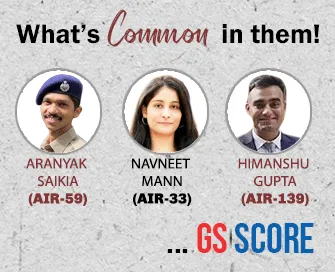

29th November 2024 (12 Topics)
Mains Issues
Context
The ongoing internal strife in Bangladesh is seemingly a trap. Unlike in 1971, when India intervened militarily to help resolve the conflict, the continued civil unrest in the neighbouring country is an issue that needs to be dealt with carefully.
What factors are responsible for Bangladesh’s current turmoil?
The situation in Bangladesh is influenced by several interrelated factors that span its history, politics, culture, and society. Key factors responsible for the current turmoil include:
- Autocratic Governance and Political Instability: The autocratic style of governance, particularly under the deposed Prime Minister, has contributed to political instability. Intense rivalry between the two major political parties has led to confrontational politics, creating a dysfunctional democratic system.
- Conflict Between Secularism, Islamism, and Bengali Identity: While about 90% of the population practices Islam, the secularist-nationalist discourse and the more inclusive, syncretic Bengali culture (which blends Islamic and Hindu elements) are in conflict. Islamic resurgence, especially with hardliner factions, threatens the more inclusive Bengali culture, which historically helped prevent extremism.
- Historical Divisions from the Liberation War: Deep-rooted divisions in society stem from differing roles during the 1971 Liberation War. Some groups, including parts of the Mukti Bahini, resented India's involvement, perceiving it as an attempt to bring Bangladesh under its sphere of influence.
- Negative Public Perception of India: In Bangladesh, there is a widespread perception that India’s involvement in the country’s liberation came with a price, and this narrative has been politically expedient for some groups.
- Role of the Military in Politics: Bangladesh struggles with the institutionalization of stable civil-military relations. The military has a significant influence in both political and commercial spheres.
- Weak Civil Institutions and Governance: The lack of effective governance and institutional checks has led to a deeply fractured polity. Governance is often marked by inefficiency, and institutions have failed to build resilience against political crises.
- Impact of Extremism and Religious Identity: The rise of Islamic hardliners and the political influence of Islamist groups are creating significant tension within Bangladesh’s society.
- Economic Strains and Unemployment: Economic challenges, including rising unemployment and the inability to create sustainable jobs for the youth, contribute to social unrest.


Mains Issues
Context
The Mahatma Gandhi National Rural Employment Guarantee Act (MGNREGA) guarantees 100 days of work per year for rural households. Each household has a job card that lists its registered adults, and no one can work without a job card. To add new members to a job card, proof of adulthood is required. However, under certain circumstances, people can be removed from these job cards, a process outlined in the Act.
Guidelines for Deletions:
- Job cards can be deleted if:
- The household permanently migrates.
- The job card is found to be a duplicate.
- It was issued based on forged documents.
- If a Gram Panchayat is reclassified as a municipal corporation, all job cards in that Panchayat are deleted.
- If a person is to be removed from the list, they must be given a chance to explain, in the presence of two independent witnesses. These rules are mentioned in the Master Circular, a guideline document issued by the Ministry of Rural Development (MoRD) to ensure that deletions are fair and transparent.
The Rise in Deletions:
- In 2021-22, around 1.49 crore workers were deleted from MGNREGA job cards. However, this number surged to 53 crore in 2022-23 — an increase of 247%. Over the past four years, 10.43 crore workers have been removed from job cards across the country.
- This sudden surge coincided with the government's push to make Aadhaar-based payments (ABPS) mandatory for MGNREGA workers. For ABPS to work, every worker's Aadhaar number must be linked with their job card.
- In the process of increasing Aadhaar linkage, officials were pressured to delete workers to make the compliance percentage look better. This led to deletions without proper verification, with some workers being removed based on incorrect reasons, even though they were still entitled to work.
Reasons for Deletions:
- A large number of deletions (about 83% in 2023) were attributed to workers being labeled as "Not willing to work." However, many of these workers had either worked or asked for work during the same year they were deleted. The most troubling part is that many deletions were done without informing the workers or following the required process, like involving the Gram Sabha (local village council).
- Other Issues:
- Some deletions were justified as "village becomes urban," even though, according to the Act, all job cards in an urbanized village should be deleted, not just a few workers.
- A staggering 71% of deletions were attributed to workers being "Not willing to work," despite the high unemployment in rural areas. This number raises serious concerns about the accuracy and fairness of these deletions.
- Problems with the Process:
- Many workers were deleted without any verification or due process, which is required by the Act.
- The government, despite listing the reasons for deletions in the MGNREGA Management Information System (MIS), hasn't conducted any analysis of these deletions, leading to potential misuse of the system.
Recommendations for Improvement:
- Verification and Audits: Independent audits and checks should be implemented to ensure that deletions are legitimate.
- Involving Gram Sabhas: Deletions should be conducted transparently, with Gram Sabhas (village councils) involved in the decision-making process.
- Accountability and Transparency: There should be clear records, public consultations, and grievance redress systems to ensure that no worker is wrongfully removed from the job card.
- Training Local Authorities: Gram Panchayats (local councils) should be trained to follow proper protocols when making decisions about deletions.
Fact Box: MGNREGA
|


Prelims Articles
Context
The Commissioner of Railways Safety has identified serious flaws in the newly constructed vertical lift bridge at Pamban, which was built to replace the old bridge from 1914, which was closed in December 2022.
About
- It is India’s first vertical lift rail bridge. It is being built parallel to the existing 110-year-old Pamban Bridge at Rameshwaram in Tamil Nadu.
- The old bridge, which has served its lifespan and is facing structural issues like corrosion and damage to its lift spans, has had to impose a permanent speed restriction of 10 km/h.
- It was the sole connection between Mandapam and Rameswaram until a parallel road bridge was built in 1988.
- In recent years, there were intermittent closures for repairs, which prompted the need for a new bridge.
- The new Pamban Rail Bridge is designed to improve both rail traffic and facilitate the movement of ships, as it features a vertical lift span that can be raised to allow larger ships to pass underneath.
- This modern bridge will be 2,070 meters long, with the ability to accommodate future track doubling.
- It will connect Mandapam town in mainland India to Pamban Island and
- The bridge’s construction is expected to enhance the efficiency and safety of rail operations while also facilitating maritime activity, thereby benefiting both the transportation and shipping sectors in the region.
- The project is being executed by Rail Vikas Nigam Limited (RVNL), on behalf of Southern Railway.
- The Pamban Bridge is located in a cyclone-prone area with high wind velocities.


Prelims Articles
Context
The Centre has approved interest-free loans worth Rs 3,295 crore to States for the development of tourism sites and infrastructure. As part of this initiative, 40 new projects have been identified across 23 States.
About the Scheme:
- This initiative, called Special Assistance to States for Capital Investment (SASCI), aims to support the comprehensive development of iconic tourist centres in India.
- The scheme offers interest-free loans for a period of 50 years to the States, helping them enhance tourism infrastructure, promote tourism in lesser-known locations, and market these destinations globally.
- The initiative is part of a broader strategy to enhance the tourism sector, promote lesser-known destinations, and boost local economies by improving infrastructure and facilities for tourists.
- The objectives of the scheme include:
- Development of Tourism Infrastructure: The funds will be used for the development of infrastructure such as roads, hotels, transport facilities, and other amenities to make these sites more attractive and accessible to tourists.
- Promotion of Lesser-Known Destinations: The Tourism Ministry is encouraging States to develop new and lesser-known tourism destinations, like Bateshwar in Uttar Pradesh, Ponda in Goa, Gandikota in Andhra Pradesh, and Porbandar in Gujarat, in order to reduce the pressure on already overcrowded popular destinations.
- Sustainable Growth and Employment: By funding these projects, the scheme aims to generate sustainable growth in local economies and create employment opportunities in tourism-related sectors.
- Global Branding and Marketing: The scheme also envisions branding and marketing of these tourist centres at a global scale to attract international visitors, thereby boosting the tourism sector in India.
- Collaboration with Hospitality Chains: The Tourism Ministry is collaborating with global hospitality chains to train Indian youth in the tourism sector. Upon completion of training, they will be absorbed by these hotel chains, improving employment prospects for young Indians in the hospitality industry.
Fact Box: India’s Tourism Sector
|


Prelims Articles
Context
The University Grants Commission (UGC) has approved new guidelines that will allow students in Higher Education Institutions (HEIs) to shorten or extend the duration of their undergraduate degree programs. This means students will now have the flexibility to finish their degree earlier (Accelerated Degree Programme or ADP) or take longer to complete it (Extended Degree Programme or EDP), while still meeting the same academic requirements as the standard duration.
Key Details of the New System:
- Under the new guidelines released as part of the Compendium of UGC Regulations, higher education institutions (HEIs) can offer two distinct options –
- accelerated degree programme (ADP)
- extended degree programme (EDP)
- The UGC’s initiative is also in sync with the objectives of the National Education Policy (NEP) 2020, which emphasises learner-centric education and skill development.
- Same Credits, Different Duration: In both ADP and EDP, students will earn the same number of credits as in the regular degree program, but they will do so in either a shorter or longer time frame.
- The degree certificate will state that the student has completed the program in a shortened or extended duration, and these degrees will be treated the same as a regular degree for academic and job purposes.
- Option to Choose Duration: Students can choose to shorten their program by completing more credits per semester (ADP) or extend their program by taking fewer credits per semester (EDP).
- Evaluation and Eligibility: HEIs will form committees to evaluate which students are eligible for the ADP or EDP. These committees will assess students based on their performance during the first or second semester.
- The committee will decide whether a student can take on extra credits (for ADP) or reduce credits (for EDP) to fit the chosen duration.
- Degree Certification: Once the student completes the program within their opted duration, HEIs will issue the degree. There is no need to wait for the standard duration to end.
- The degree will include a note mentioning that the program was completed in either a shortened or extended time frame.
- Foreign University Model: This system of flexible degree durations is similar to what is already offered by several top foreign universities, which allow students to complete their degrees faster or slower based on their preferences.
- Guidelines for HEIs: HEIs are allowed to reserve up to 10% of their intake for students who choose the ADP. A committee will review applications from students who want to opt for ADP or EDP after their first or second semester, and select those eligible for the program.
- Transcripts and Evaluation: The student’s transcripts will reflect the actual courses taken each semester. The evaluation system for these students will remain the same as for regular students. Both ADP and EDP students will undergo the same exams and assessment process as regular students.


Prelims Articles
Context
The story of the Syringe Tide of 1987 and the response to the HIV/AIDS crisis highlights the importance of proper waste management and public health in addressing environmental and health risks.
About
- The Syringe Tide of 1987 was an unfortunate event where medical waste including syringes washed up on U.S. beaches.
- Occurring during the HIV/AIDS epidemic, it fueled fears about disease transmission and led to the Medical Waste Tracking Act of 1988, regulating biomedical waste disposal.
- The incident also influenced global waste management practices, including in India, where it spurred the introduction of the Biomedical Waste (Management and Handling) Rules in 1998.
- This event highlights the connection between public health crises and stronger environmental regulations.
- International Environmental Standards: The U.S. response to the syringe tide influenced global approaches to medical waste management.
- In India, this indirectly contributed to the introduction of the Biomedical Waste (Management and Handling) Rules, 1998. The international influence of the U.S. laws and their adoption in India provides insights into environmental governance and policy evolution across countries.
- The management of biomedical waste continues to be a pressing issue, especially in developing countries, with concerns regarding public health risks (e.g., infections) and environmental degradation. The HIV/AIDS epidemic remains an ongoing challenge in many parts of the world, making it relevant to public health discussions and international health regulations.
- Health and Environment Governance:
- India's Response: India introduced the Biomedical Waste Management and Handling Rules (1998) after the global incident, marking an important development in Indian environmental law.
- Judicial Intervention and Environmental Justice: The Dr. B.L. Wadehra vs. Union of India (1996) case is a key example of judicial intervention that spurred action on waste management in India.
- Challenges in Biomedical Waste Management: Despite regulatory improvements, challenges remain, especially in rural and resource-limited settings. Issues such as non-compliance, the lack of infrastructure, and occupational health hazards for healthcare workers are relevant for understanding the implementation gaps in healthcare policy.


Prelims Articles
Context
India has been involved in Global Plastic Treaty negotiations in Busan, South Korea. At the ongoing talks, India made its position clear on addressing plastic pollution. India supports the development of sustainable alternatives to plastics, but it does not agree with being forced to use specific alternatives or be restricted on plastic use, especially in the context of developing countries' rights and needs.
The Global Plastic Treaty Talks:
- The Intergovernmental Negotiating Committee (INC) is negotiating a Global Plastic Treaty to tackle plastic pollution.
- Countries like India, China, Russia, Saudi Arabia, and the U.S. are pushing back against proposals to limit plastic production because of their reliance on petrochemical industries that produce plastics.
- These countries argue that reducing plastic production could disrupt their economies and industries.
India’s Stance:
- India has shown support for research and innovation to find sustainable alternatives to plastics and non-plastic substitutes. However, it has objected to suggestions that would push for a reduction in the use of primary plastic polymers (the basic materials from which plastics are made), arguing that it should not be forced to use specific materials or products. India also emphasized that any agreement should respect its national priorities and right to development, acknowledging that developing countries need financial and technical help to manage plastic waste.
- Financial Support for Developing Countries: India stressed that, like in climate change agreements, there should be financial and technical assistance for developing countries to handle plastic pollution. This should include technology transfer to help countries manage plastic waste better.
- Issues with Sustainable Alternatives: India faces challenges in adopting sustainable plastic alternatives such as biodegradable or compostable plastics. The main issue is the lack of clarity over whether these alternatives truly degrade and whether they are properly composted. New alternatives like jute, cotton, or recycled materials are often more expensive and less practical compared to the convenience of plastic.
Plastic Waste Problem in India:
|


Prelims Articles
Context
Despite the Union government’s indifference to Karnataka’s demands for approval to proceed with the Kalasa-Banduri project along the Goa border, the state government continues to exert pressure on the Centre.
About Kalasa-Banduri Project
- The Kalasa-Banduri project is a water diversion scheme proposed by Karnataka to address the drinking water needs of several arid districts in the state, including Belagavi, Dharwad, Bagalkot, and Gadag.
- The project involves constructing barrages (small dams) on two tributaries of the Mahadayi River: the Kalasa and Banduri
- The goal is to divert water from these streams into Karnataka's Malaprabha River basin, which is a tributary of the Krishna River, to meet the drinking and irrigation water requirements of these water-scarce areas.
- Key Features:
-
- Location: The project targets the Mahadayi River which originates in the Western Ghats in Karnataka's Belagavi district, flowing through Goa before joining the Arabian Sea.
- Water Diversion: The plan is to construct barrages on the Kalasa and Banduri streams, which are tributaries of the Mahadayi, and then divert the water towards Karnataka's Malaprabha River.
- Purpose: The main aim of the project is to supply drinking water to the districts in Karnataka that face chronic water shortages.
- History: The project was first proposed in the 1980s but has faced repeated setbacks due to a long-standing dispute between Karnataka and Goa over the sharing of the Mahadayi River water.
Background of the Dispute:
- Mahadayi River: The river is shared between Karnataka and Goa. It rises in Karnataka and flows through Goa, where it is known as the Mandovi River.
- The river is rain-fed, making it essential for both states, particularly Goa, which depends on it for drinking and irrigation needs.
- Inter-state Dispute: Goa has objected to Karnataka's plans to divert water, arguing that it would impact the availability of water for its own needs. Maharashtra is also involved in the dispute due to its interest in the shared water resources.
- The issue has been in the courts for years, with both states unable to reach a resolution.


Prelims Articles
Context
India has successfully tested a nuclear-capable ballistic missile called the K4 from a nuclear-powered submarine in the Bay of Bengal, marking a significant advancement in the country's defense capabilities. The test was conducted from the submarine INS Arighaat, which is based off the coast of Visakhapatnam.
Key Details:
- The K4 missile, which has a range of about 3,500 km, was tested for nearly its full range. This missile is designed to be launched from submarines, providing India with the ability to strike from the sea.
- The missile was launched from the INS Arighaat, India’s second Arihant-class submarine.
- This submarine was commissioned in August 2023 to strengthen India’s nuclear deterrence.
- India's Strategic Capability: With this test, India joins a small group of countries that can launch nuclear missiles from land, air, and undersea. This boosts India's nuclear deterrence by diversifying its missile launch platforms.
- The K4 missile has been tested several times before, though from submersible platforms instead of a fully functional submarine. This test from a nuclear-powered submarine is the first of its kind.
- The K4 is a solid-fuelled missile, which makes it more reliable and quicker to launch compared to liquid-fuelled missiles.
Fact Box: Nuclear Submarine
|


Editorials
Context
The recent electoral success of the Janatha Vimukthi Peramuna (JVP)-led National People’s Power in Sri Lanka's parliamentary and presidential elections marks a significant shift from armed insurgency to parliamentary politics. This reflects a broader trend where left-wing revolutionary groups, once committed to armed struggle, are now engaging with democratic processes. Groups like the JVP, Nepal’s Maoists, and El Salvador’s FMLN exemplify this evolution, signifying a pragmatic shift in their strategies to achieve social and economic justice within democratic frameworks.
Evolution of Left-Wing Insurgencies
- Ideological Roots of Armed Struggle: Left-wing insurgencies traditionally sought to dismantle capitalist states through armed struggle, driven by Marxist-Leninist or Maoist ideologies, which viewed the state as a tool of capitalist oppression.
- Transition to Democratic Engagement: Over time, insurgent groups, including Nepal’s Maoists and El Salvador’s FMLN, have shifted from revolutionary warfare to participating in parliamentary politics, adapting their methods in response to political realities.
- Strategic Realism: Protracted insurgency is resource-intensive and unsustainable. The harsh realities of prolonged warfare, including diminishing public support due to civilian casualties and hardship, have encouraged groups to pursue political solutions.
Shift in Political Strategy
- Nepal’s Maoist Example: The Communist Party of Nepal (Maoist) ended its civil war in 2006 and participated in mainstream politics, helping transition Nepal into a federal democratic republic, showcasing how insurgent groups can operate within democratic institutions.
- El Salvador’s FMLN Transition: After signing peace accords in 1992, the FMLN evolved from a Marxist-Leninist insurgent group into a legitimate political party, winning national elections and shifting to a more moderate, democratic socialist stance.
- Sri Lanka’s JVP: The JVP, originally a Marxist-Leninist-Maoist group that led violent uprisings in the 1970s and 1980s, has embraced parliamentary politics since the 1990s, advocating for economic reform and social justice without resorting to violence.
Factors Driving the Shift and Challenges
- Strategic Realism and Public Sentiment: Shifting public sentiment against violence and the resource-intensive nature of insurgencies have prompted revolutionary groups to reconsider their approach and engage in peaceful political processes.
- International Influence and Peace Negotiations: International actors, including the United Nations, have played key roles in facilitating peace agreements, enabling insurgent groups to transition to political participation in countries like El Salvador and Nepal.
- Ideological Adaptation and Governance: Groups transitioning to electoral politics often have to adapt their rigid revolutionary ideologies, balancing their core values with the practical demands of governance to gain public legitimacy and credibility.
Practice Question:
Q. The shift from armed struggle to electoral politics by left-wing insurgent groups, such as the JVP in Sri Lanka, Nepal’s Maoists, and El Salvador’s FMLN, highlights the evolving nature of political engagement in post-conflict societies. Analyze the factors driving this transformation and the challenges faced by these groups in establishing democratic legitimacy.


Editorials
The 2025 Census in India will include an exercise to update the National Population Register (NPR), which is the first step toward creating the National Register of Indian Citizens (NRIC). This initiative aims to establish a verified citizen registry, differentiate citizens from non-citizens, and enhance national security. The process is being closely examined due to its potential implications on identity verification, welfare distribution, and data privacy.
NRIC and NPR Process
- Origins and Mandate: The NRIC derives its mandate from the Citizenship Act of 1955, with the goal of creating a verified citizen database. The exercise gained relevance following the Subrahmanyam Committee’s recommendations after the 1999 Kargil War.
- NPR’s Role: The NPR, as the first step in this process, aims to collect demographic and biometric data from all usual residents to distinguish between citizens and non-citizens, ensuring that only eligible individuals receive government benefits.
- Phases of Data Collection: The process includes multiple stages: demographic data collection, biometric data collection, inviting public claims and objections, followed by a verification process to finalize the NRIC.
NRIC vs. Aadhaar
- Distinct Purposes: While Aadhaar is a biometric identity tool for residents (citizens and non-citizens) to access services, the NRIC focuses specifically on verifying Indian citizenship, mandating proof of citizenship.
- Complementary Roles: Aadhaar is broadly inclusive for all residents and serves as an identity verification tool, whereas the NRIC serves as a definitive citizen registry, crucial for national security.
- Data Collection Difference: While Aadhaar’s biometric data is already stored, the NRIC will involve demographic and citizenship verification, which is distinct from the services Aadhaar facilitates.
Challenges and Concerns
- Assam’s NRC Experience: Assam’s NRC update in 2019, intended to identify illegal immigrants, highlighted issues like strict documentation requirements, accuracy concerns, and exclusion of many rural residents, offering a cautionary tale for the national NRIC process.
- Privacy and Data Protection: The collection of biometric and demographic data has raised concerns about data privacy, despite the Supreme Court’s Aadhaar verdict, making the need for robust data protection laws crucial.
- Exclusion Fears and Administrative Hurdles: The large-scale verification process could face challenges regarding exclusion of communities with limited documentation and the logistical difficulties of verifying millions of citizens, necessitating streamlined procedures and transparency.
Practice Question:
Q. Discuss the scope, objectives, and challenges of implementing the National Register of Indian Citizens (NRIC) through the 2025 Census. How do the issues raised in Assam’s NRC update inform the potential nationwide implementation?


Editorials
Context
The recent CoP (Conference of the Parties) negotiations in Baku ended with an agreement on a “roadmap” for climate finance. While the deal promises to triple financial commitments to developing countries and sets a target of $300 billion annually by 2035, the outcome has left developing nations frustrated. The agreement falls far short of expectations, reflecting the growing divide between developed and developing countries on climate action.
The Financial Commitments
- Public Finance Pledge: The agreement includes a commitment to raise public finance for developing countries from $100 billion to $300 billion annually by 2035. This is a significant increase, but it is only 20% of what developing nations initially demanded.
- Broader Finance Goal: In addition to public finance, the goal is to scale up finance from both public and private sources to $1.3 trillion annually by 2035, aimed at supporting climate action in developing nations.
- Missed Opportunities for Impact: The financial package lacks crucial elements such as predominantly public funding, technology transfer, and infrastructure investments that could have substantially benefited vulnerable populations in the Global South.
Geopolitical and Market Influences
- Shift from Global Solidarity: Developed countries have consistently backtracked on their commitments to support developing nations, often prioritizing market competition over global solidarity in climate action.
- Climate Action and Trade Conflicts: The latest CoP talks showed that climate negotiations are increasingly entangled with trade disputes, with political maneuvering often taking precedence over substantive solutions.
- Potential Impact of Geopolitical Shifts: The return of a more nationalist U.S. leadership, particularly under a potential Trump presidency, could further complicate international climate cooperation, especially after the previous U.S. withdrawal from the Paris Agreement.
Moving Beyond Promises
- Unmet Expectations: The recent CoP negotiations failed to deliver meaningful, transformative climate action, leaving developing countries disappointed and frustrated with the lack of concrete outcomes.
- Symbolism of Brazil's CoP: Next year’s CoP, to be held in Brazil, carries symbolic significance as it returns to the country where the world first recognized the need for serious climate action during the 1992 Earth Summit.
- Urgency of Action: As the climate crisis intensifies, there is growing pressure to move beyond symbolic gestures and empty promises to implement real, transformative action to combat climate change globally.
Practice Question:
Q. Critically analyze the outcomes of the recent CoP negotiations on climate finance and the implications for developing nations. How can the international community address the widening gap in climate commitments and ensure more substantial action in future negotiations?




